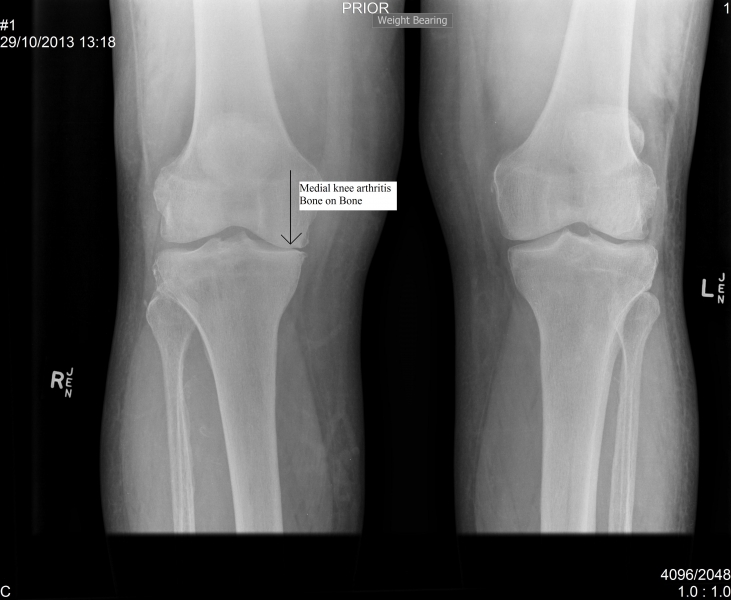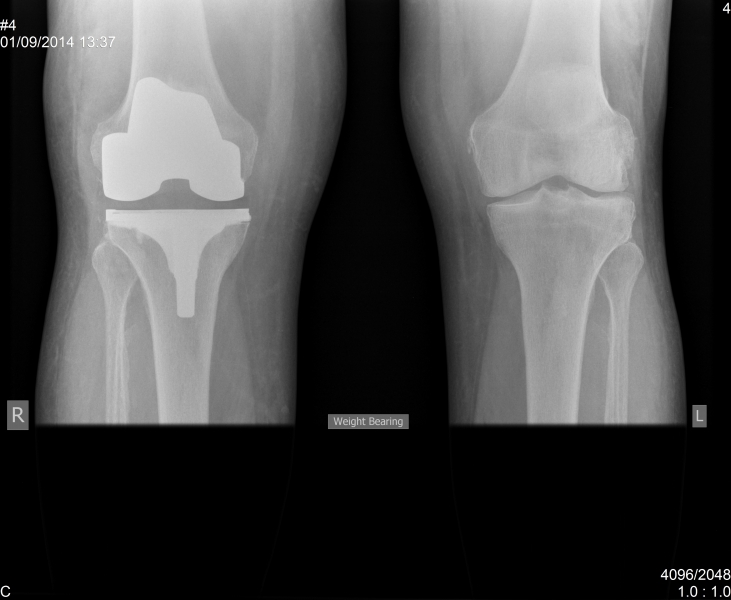A Knee Replacement is a surgical procedure performed to treat chronic knee pain usually due to arthritis.
Knee arthritis is a condition where the smooth articular cartilage lining of the knee wears away. Eventually this exposes the underlying bone. Knee arthritis is associated with knee pain, stiffness and limitation of function.




